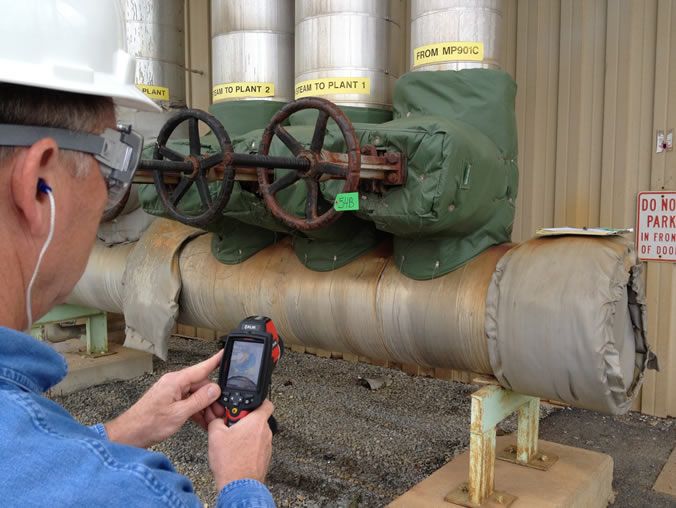THERMAL BLANKET DESIGN
LT450TT-HS (LT232C-TT-HS)
INTRODUCTION
Shannon GES Thermal Blankets are a CAD designed/CNC produced, high quality engineered removable/reusable insulation system designed to retain radiant heat, minimize maintenance and improve the surrounding work environment. Shannon GES Thermal Blankets withstand extreme weather and environmental conditions. Blanket design is CUI: Corrosion Under Insulation Compliant, Hydrophobic, Water Resistant & Corrosion Resistant.
Common Applications and Markets
Valves, Flanges, Pumps, Piping, Equipment, Tanks. Complex surface conditions that require service, inspection and repair, with a CUI hydrophobic insulation requirement. Chemical and Petro Chemical Processing Plants.
Service Temperature: This design is to act as a Thermal Barrier with a maximum service temperature of 450˚F (232˚C).
Product Components:
The Inner & Outer Jacketing consists of a 16.5 oz/yd² (560 g/m²) PTFE Teflon® Impregnated Fiberglass Cloth. The Insulation Core consists of Hydrophobic Supermat™ @ 9 pcf (176.2 kg/m3) Type “E” Fiber, encapsulated by the inner and outer jacketing, with a double sewn construction, producing a “Self-Contained system”. The Blanket Insulation System includes Integral Fasteners & ID Tagging.

24” IPS Outdoor Service Piping – 12 dBA Reduction
BLANKET THICKNESS SURFACE TEMPERATURE REFERENCE
Operating Temp |
Thickness |
Surface Temp |
Thickness |
Surface Temp |
Thickness |
Surface Temp |
|---|---|---|---|---|---|---|
| 121˚ C (250˚ F) | 25 mm( 1″) | 37.9˚ C (100.2˚ F) | 40 mm( 1.5″) | 33.3˚ C (92.0˚ F) | 50 mm (2″) | 30.8˚ C (87.4˚ F) |
| 149˚ C (300˚ F) | 25 mm( 1″) | 42.6˚ C (108.6˚ F) | 40 mm( 1.5″) | 36.8˚ C (98.2˚ F) | 50 mm (2″) | 33.5˚ C (92.3˚ F) |
| 177˚ C (350˚ F) | 25 mm( 1″) | 47.3 ˚C (117.2˚ F ) | 40 mm( 1.5″) | 40.3˚ C (104.6˚ F ) | 50 mm (2″) | 36.3˚ C (97.4˚ F ) |
| 204˚ C (400˚ F) | 25 mm( 1″) | 52.2˚ C (126.0˚ F) | 40 mm( 1.5″) | 44.0 ˚C (111.2˚ F) | 50 mm (2″) | 39.3 ˚C (102.7˚ F) |
| 232˚ C (450˚ F) | 25 mm( 1″) | 57.2˚ C (135.1˚ F) | 40 mm( 1.5″) | 47.8 ˚C (118.0˚ F) | 50 mm (2″) | 42.3 ˚C (108.2˚ F) |
* The above referenced Cold Face Surface Temperatures should be used as guidelines for blanket insulation thickness design.
* The Cold Face Surface Temperature of the blanket should approach surrounding ambient temperature conditions.
* The economic thickness of the blanket should consider blanket cost, thermal performance and blanket design constraints.
* Heat Loss Calculations are based on a 21.1˚ C (70˚ F) ambient temperature using a flat surface condition.
